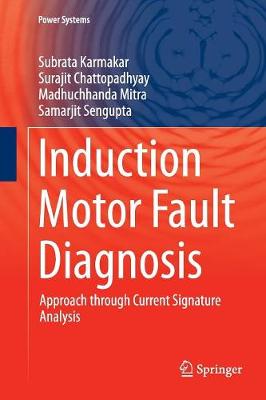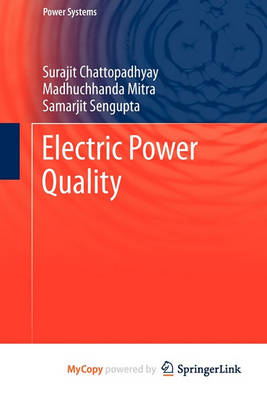Power Systems
2 total works
Induction Motor Fault Diagnosis
by Subrata Karmakar, Surajit Chattopadhyay, Madhuchhanda Mitra, and Samarjit Sengupta
This book covers the diagnosis and assessment of the various faults which can occur in a three phase induction motor, namely rotor broken-bar faults, rotor-mass unbalance faults, stator winding faults, single phasing faults and crawling.
Following a brief introduction, the second chapter describes the construction and operation of an induction motor, then reviews the range of known motor faults, some existing techniques for fault analysis, and some useful signal processing techniques. It includes an extensive literature survey to establish the research trends in induction motor fault analysis.
Chapters three to seven describe the assessment of each of the five primary fault types. In the third chapter the rotor broken-bar fault is discussed and then two methods of diagnosis are described; (i) diagnosis of the fault through Radar analysis of stator current Concordia and (ii) diagnosis through envelope analysis of motor startup current using Hilbert and Wavelet Transforms. In chapter four, rotor-mass unbalance faults are assessed, and diagnosis of both transient and steady state stator current has been analyzed using different techniques. If both rotor broken-bar and rotor-mass unbalance faults occur simultaneously then for identification an algorithm is provided in this chapter. Chapter five considers stator winding faults and five different analysis techniques, chapter six covers diagnosis of single phasing faults, and chapter seven describes crawling and its diagnosis.
Finally, chapter eight focuses on fault assessment, and presents a summary of the book together with a discussion of prospects for future research on fault diagnosis.
Electric Power Quality
by Surajit Chattopadhyay, Madhuchhanda Mitra, and Samarjit Sengupta
In the present day deregulated power market electric power quality issues have become great concerns of utilities, end users and manufacturers. Worldwide researches are going on to address those issues. Electric Power Quality has evolved from the researches carried out by the authors.
The key features of the book can be highlighted as follows: the contents focuses, on one hand, different power quality issues, their sources and effects and different related standards, which are required for students, researchers and practising engineers and, on the other hand, measurement techniques for different power quality parameters, the content level is designed in such a way that the concepts of different power quality issues in modern power system are built up first, followed by some existing and new measurement methods. This content should attract the students, researchers and practising engineers, the predominant features are Lucid but concise description of the subject, detailed new measurement techniques and Electric Power Quality is intended for graduate, postgraduate and researchers as well as for professionals in the related fields.
At the end, a chapter has been added which deals with a concept of generation of harmonics in a power system and its components.

